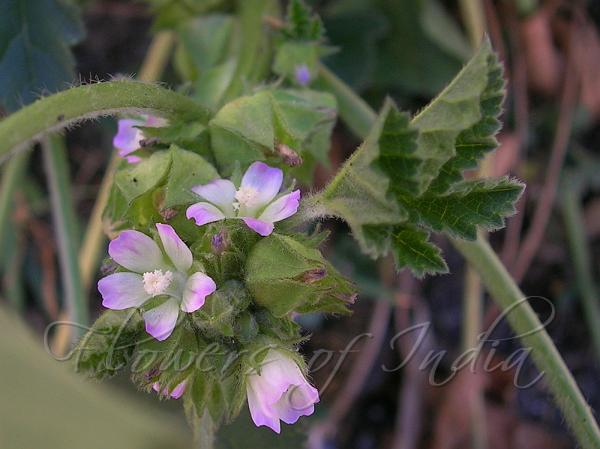|
| Small Mallow |
|

|

| File size | 308811 |
| Original date | 2/27/06 4:04 PM |
| Resolution | 1400 x 1050 |
| Flash | Flash did not fire, auto |
| Focal length | 8.0mm |
| Exposure time | 1/75s |
| Aperture | 3.2 |
| Focus Distance | |
| Metering Mode | Partial |
| Camera make | NIKON |
| Camera model | E3700 |
| Sensor type |
|
|
|
|
Photo: |
Botanical name: Malva parviflora Family: Malvaceae (Mallow family)
Synonyms: Althaea parviflora, Malva rotundifolia subsp. parviflora
Synonyms: Althaea parviflora, Malva rotundifolia subsp. parviflora
Small Mallow is an annual or perennial herb with
prostrate or erect habit, growing up to 50 cm in height. It is very
often confused with
Common Mallow. The broad leaves, often
3-7-lobed, rounded toothed, are 2-4 cm. Flowers are borne in leaf-axils
usually fascicled, compact, rarely solitary. Petals are white, pinkish
at the tips, usually shorter than or equal to sepals, occasionally
longer, slightly notched above, hairless, oblong, slightly narrow at
base. Staminal column is hairless about 2 mm long. Flower-stalks are
3-5 mm long, usually not visible. False-sepals are linear, about 7 mm
long, 1 mm broad. Sepal-cup is 3-5 mm long, densely velvet-hairy. Fruit
is disc-like, 5-6 mm across. Small Mallow is native to Sahara to
Pakistan, naturalized in India, including the Himalayas.
Medicinal uses: Small Mallow is used for the
treatment of wounds and other related ailments by the Xhosa people of
South Africa. It is also known to be used in the treatment of inflamed
purulent wounds, swellings, bruises, and broken limbs.
Small Mallow is used for the
treatment of wounds and other related ailments by the Xhosa people of
South Africa. It is also known to be used in the treatment of inflamed
purulent wounds, swellings, bruises, and broken limbs.
Medicinal uses:
 Small Mallow is used for the
treatment of wounds and other related ailments by the Xhosa people of
South Africa. It is also known to be used in the treatment of inflamed
purulent wounds, swellings, bruises, and broken limbs.
Small Mallow is used for the
treatment of wounds and other related ailments by the Xhosa people of
South Africa. It is also known to be used in the treatment of inflamed
purulent wounds, swellings, bruises, and broken limbs. | Identification credit: Tabish | Photographed in Mussoorie, Uttarakhand. |
• Is this flower misidentified? If yes,